Life
Pakistani Fashion Steals a March
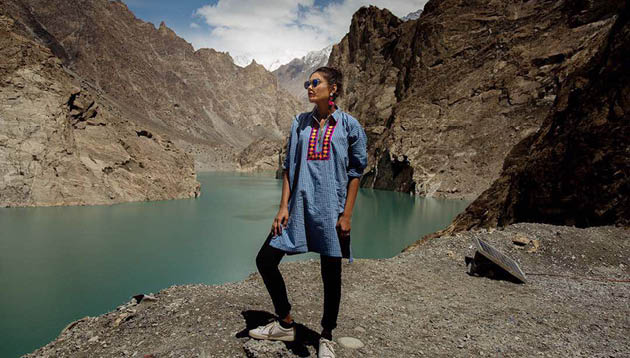
Photo: My Fashion Fix.
In Atlanta, Georgia, preparations were in full swing for a winter wedding in the Shah household. The bride-to-be, Neerja Shah, who’s lived in the United States for the past decade, is carefully taking stock of her wedding trousseau. Neerja has chosen a Manish Malhotra lehenga; but for the rest of her bridal wear, she is relying on Pakistani labels and designers, such as Khadi, Maria B and Sana Safinaz.
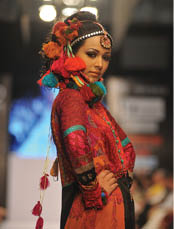
Faizaa Shamee show in Karachi.
Neerja, a self-confessed Bollywood fan, opted for Pakistani over Indian designers for the rest of her bridal trousseau: “I wanted some ethnic, but functional outfits in my new wardrobe that would serve well for semi-formal occasions post marriage. Most Indian designers I saw were into ornate bridal wear. The Pakistani salwar suits are very well cut and are practical enough to be worn when you want to go ethnic, but not really all dolled up.”
Increasing numbers of Indian women in America are discovering the ease and comfort of Pakistani salwar suits, churidaars, tulip pants and tunic kurtas as occasional semi-formal dress. Considering that the Indian women’s ethnic wear market, which is segmented into sarees, salwar kameez, kurtis and lehengas, is expected to grow at 10 percent CAGR through 2018-22, it comes as a surprise that semi-casual ethnic fashion amongst the South Asian community seems to be dominated by Pakistani labels in the West.
When it comes to the casual ethnic wear segment, Pakistani designers have stolen a march in the market. Many Indians in the United States and the United Kingdom rely on Pakistani designers and online retail houses for their salwar kameezes. Brands such as Khadi, Sana Safinaz, Bunto Kazmi, Ali Xeeshan, Faiza Samee and many others are hugely popular for ethnic wear.
Many Indians swear by the fabrics, cuts and shapes of Pakistani designed pant suits and prefer them to Indian designed salwar kameezes. By contrast, most Indian ethnic retailers in the United States, such as Sahil and other big labels, such as Manish Malhotra and Rohit Bal, have been catering to wedding fashion. Popular salwar kameez brands from India, such as W, BIBA, Fabindia and Westside, have done little to promote their clothes in the Western market. As a result, eith a smart mix of marketing, accessibility and superior quality, Pakistani labels have scooped up the ethnic casual fashion market in the United States right under Indian designers’ noses.
SURPRISE BUT NO SURPRISE
Ali Xeeshan, one of Pakistan’s new faces in the luxury pret category, says that while the fashion industry in Pakistan has evolved during the past decade and a half, it is only now that designers are looking beyond the domestic market. He is not surprised that Pakistani fashion is popular with Indian expats: “We (Indians and Pakistanis) are cut from the same cloth. We share the same ethnicities, the same roots, admire similar sensibilities, so it is obvious that Indians who have access to Pakistani fashion in the West would want to wear it.”
Pakistani designers feel that Indians have always been interested in Pakistani products, just as Pakistanis are fascinated by Bollywood. But because of the fraught political relationship between the two countries, trade suffered and Indians could not access Pakistani fashion in India.
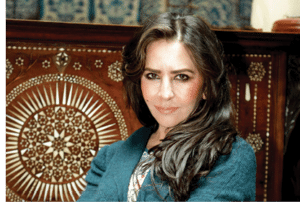
Faiza Samee call salwar kameez the only living garment in the world.
One of the most prominent names in the Pakistani fashion industry, Faiza Samee, recalls: “Back in 1996, when I first visited Delhi as part of the SAARC expo, I had no idea what I should take along or what the market demand in India was like. Those were also different times when everything was not right there on the web. So, I took along pieces that were fashionable in Pakistan. To my surprise, I was sold out in half a day. My collection was all over in the papers and it was a rage.” Samee adds, “The reason why expat Indians may be taking up to our designs is simply because it is easily available.”
Today most Pakistani designers ship across the United States, Europe and the Middle East. In addition, hundreds of small and big online retail players bring everything from the latest lawns to Sindhi pajamas right onto the doorstep.
Nevertheless, even though Indian designers have a better presence in the West, with many retailing in big chains such as Anthropolgie and Bergdorf Goodman, they were not able to cater to the ethnic casual segment.
Andleeb Rana Farhan, Pakistani fashion industry expert and CEO of My Fashion Fix, an online portal that ships Pakistani designer wear across the globe has a studied response, “I have been observing both Indian Fashion Week and Pakistani Fashion Week since its inception and there has been a major difference in the trajectory local fashion followed in both these places.”
She explains: “When Indian Fashion Week was launched in 2000, I saw that a lot of concentration was on foreign buyers. Since there were a lot of international buyers, Indian designers began doing a lot of Western wear to impress them. However, they soon realized that it was impossible to compete with mass Western wear high street brands, such as Zara, Mango, and hence they went back to concentrating on bridal wear, as that’s where the major local demand lay.”
By contrast Rana Farhan says: “When Pakistan Fashion Week was launched in 2011, the industry came together and we realized that Western buyers would not be interested in coming to Pakistan because of security issues. We also realized that Western media would be interested in our fashion week to talk how it is defying the Talibanization of Pakistan and not necessarily the designs on the runway. So, we concentrated on doing just one thing — exciting the local market with new cuts, silhouettes and designs of our national dress, the salwar kameez. I guess this is where Pakistan managed to add much more to the shalwar kameez and excelled in it, while Indians mastered the bridal segment.”
Designer Samee concurs, calling salwar kameez the only living garment in the world: “Unlike a kimono or a saree that essentially remain occasion wear, salwar kameez has been so practically restructured and reinvented that you could easily wear it in the West and not feel odd.”
Rana Farhan adds: “We constantly get requests from clients who want to wear a tunic kameez with slim pants or striped ankle pants with short kurtas to parties at Fifth Avenue or Hamptons. The fact that many of these requests are from expat Indians only strengthens our belief that we have managed to create a global silhouette.”
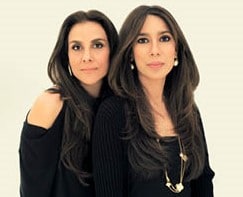
Designer duo Sana Safinaz attribute their success to the fact that they started showing their collections to South Asians abroad before everyone else.
Safinaz Muneer from the popular Pakistani designer duo Sana Safinaz also attributes this following amongst Indians abroad to the fact that their brand established themselves ahead of others: “We were established in 1994 and have been solidly around for the past two decades. Over the years we have held several trunk shows and sold our export line in Indian boutiques abroad leading to a dedicated following.”
SMART MARKETING
Many Pakistani designers also feel that unlike Indian fashion, which is heavily inspired by Bollywood, their designs are often avant-garde. Ali Xeeshan says: “Since Pakistan does not have that big a cinema influence, most designs are catered towards lesser ornate occasions that can be dressed up or down.” This form works particularly well for expats, as often they are looking at blending into the mainstream, while still retaining some of their identity.
Have the Pakistani labels also managed to better market their offerings? Faiza Samee is skeptical: “Pakistanis are very laidback people. They are not really the ones to go out and market their stuff.”
Ali Xeeshan believes that most of the popularity for Pakistani fashion occurred more organically than strategically: “Pakistani fashion industry is very new comparatively. And it is only recently that the designers began looking beyond the domestic market.”
One famous Pakistani designer, Faraz Manan, recently opened a store in Dubai with Kareena Kapoor as his brand ambassador.
Many Indian retailers, such as BIBA, now ship to the United States, but often the unique cuts and embroidery of Pakistani labels attracts many Indians to explore them. Rana Farhan says: “I believe that every place has its unique craftsmanship and Pakistanis excel in salwar kameezes. Just as I would always rely on an Indian designer for a saree, I would rely on a Pakistani designer for salwars.”
She adds: “The exchange is mutual. The number of Pakistani brides wearing Sabyasachi both in Pakistan and abroad is phenomenal.”
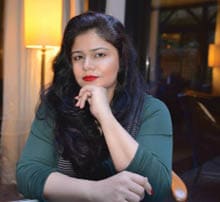
Injila Zeeshan, editor Brides & You believes that Pakistani designs evoke nostalgia amongst desis.
Injila Zeeshan, editor in chief of the bridal magazine Brides & You based in Lahore says: “Brands such as Sana Safinaz and Khaadi are huge when it comes to casual and semi-formal wear. In their designs we see motifs taken from the cultures of Rajasthan, Morocco, Turkey etc. Not just this, designers emerging out of Pakistan use the richness of color particular to the subcontinent — the golden rust, pale yellows, burnt browns and deep reds. It is obvious when the local community of South Asian desis who are already feeling nostalgic about their homelands, they want to grab it.”
